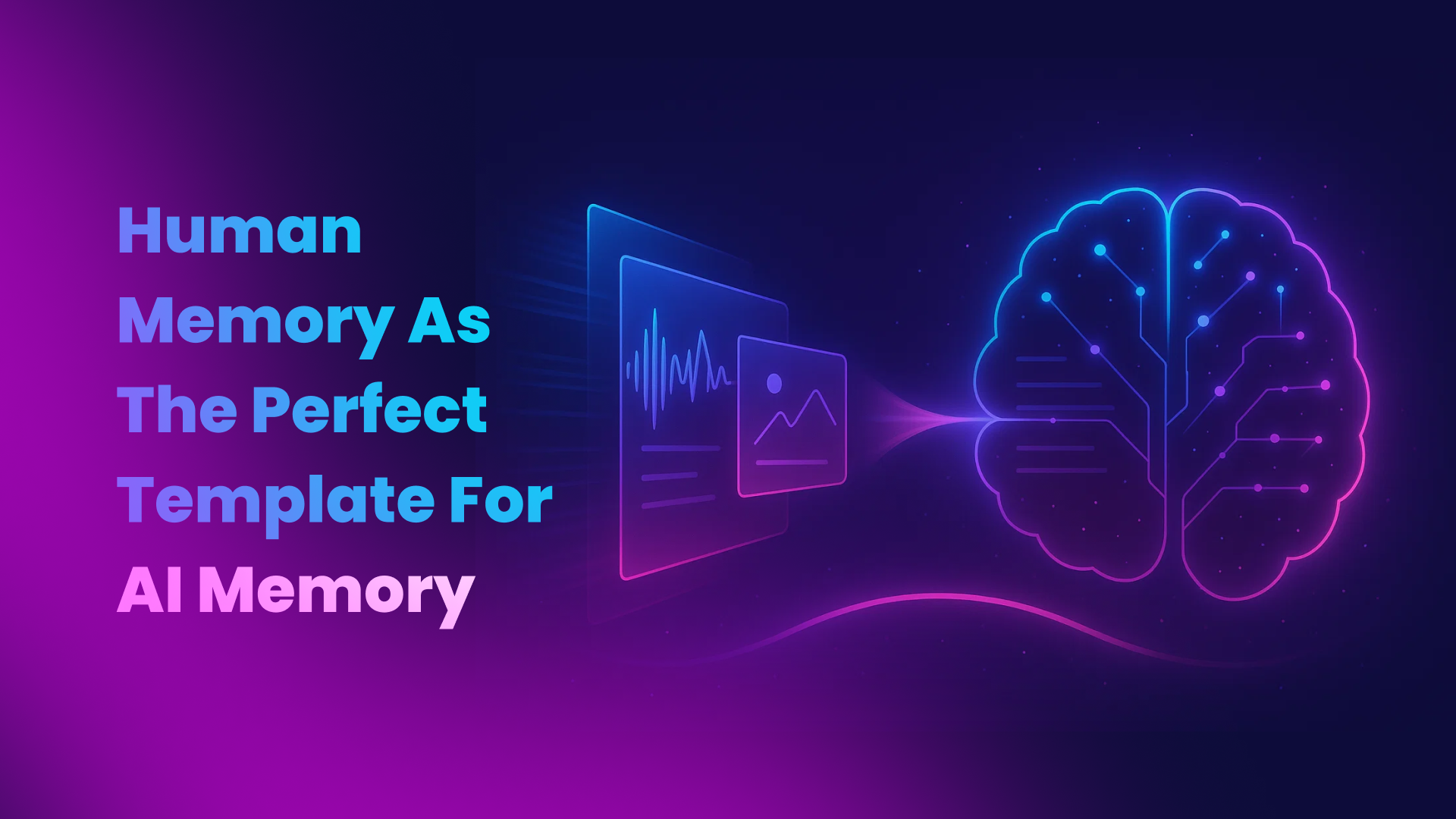If you pause to think about how humans form memory, you will remember why we need to sleep! We consume various forms of information (or modalities) throughout the day, including what we have seen, heard, read, and then commit that working memory to long-term memory while creating connections between related concepts. Some of those connections are long-lived and some short, depending on the impact on our consciousness (the large neural model running in our brain figures that out), and the value of some information (can’t forget to pay taxes!). Granted, not all memories in humans are created alike and some understand one aspect of life more than others. With AI memory created in software, we have the option of making every AI agent equally smart or making specialist agents. The choice is ours!
As the industry accelerates its move from stateless LLMs to agentic systems, the question isn’t just how we answer queries, it’s how we remember, adapt, and reason. AI memory isn’t a cache. It’s a living, evolving context engine. And building it requires more than just storing embeddings. Let’s unpack what memory means and what it would take to emulate it in an AI.
Understanding Human Intelligence With an Agentic Lens
Shallow Intelligence vs. Deep Intelligence
Shallow intelligence retrieves facts. Deep intelligence understands relationships, context, and meaning.
What makes human cognition powerful is our ability to:
- Process information across modalities (isn’t a picture worth a thousand words?)
- Create semantic connections between disparate inputs
- Recall past experiences based on partial or related triggers
This trifecta of multimodality, context, and semantics is the foundation of deep intelligence, and those are the fundamental requirements that AI memory must replicate.
Beyond Recall: What Makes Memory the Key to Intelligence
Human memory isn’t just about retrieval: It’s about relevance, abstraction, and prioritization. We intuitively know:
- What’s urgent but temporary
- What impacts other aspects of life and how
- How preferences evolve over time
- How to connect seemingly unrelated fragments into a bigger pattern
AI memory must do the same. It must learn to:
- Prioritize context based on task
- Abstract patterns across interactions
- Reason with incomplete or noisy inputs
Multi-context Memory: Context Is Social
We don’t operate in isolation. Our memory shifts depending on context, whether we’re at work, at home, or collaborating with others. Sometimes, we reconstruct understanding by combining fragments from different people.
For businesses, this translates into:
- Building collective memory across agents and teams
- Knowing what’s shareable vs. private
- Distinguishing experimental vs. proven knowledge
- Maintaining a unified front for customers
Memory isn’t just personal, it’s organizational. And it must be designed to reflect that richness.
Constraints Are Part of Intelligence
Humans constantly optimize around constraints, often without realizing it. These constraints shape our decisions, our schedules, and our preferences.
For example, if your kids have school in the morning, meetings shift to later in the day. If traffic spikes, you choose closer venues. If it’s Q4, your company’s data center load changes.
In summary, these constraints are:
- Temporal
- Contextual
- Dynamic
AI memory must encode them, not just as facts, but as inputs to decision-making. It must understand how constraints shape behavior and adapt accordingly.
Subconscious memory
Has it ever happened to you that eating something made you sick when you were a kid, and ever since you can’t even smell it without feeling nauseous? That's a deeply embedded episodic memory that you may not even remember the origins of, and yet it persists as a semantic memory that affects the decisions you make. For example, if a perfume gave you a headache, you are very unlikely to buy any other product with the same packaging. If a retailer showed you that brand as a recommendation, you are likely to “walk away” from their website! That’s critical for businesses to understand, and it’s what can differentiate the best retailer from its competitors. Responding to consumers requires AI agents with access to an ever-evolving, rich knowledge graph.
What Does This Mean for AI Memory?
🧑💻 Each AI Agent Needs:
- Contextual recall of past interactions
- Adaptation to user preferences
- Reasoning across modalities and time
🏢 Enterprise Repository of Agents Needs:
- Shared context across roles and teams
- Boundary-aware memory (what’s private vs. public)
- A collective intelligence layer that evolves with the organization
When implementing this, it translates to a relevant context in a local index, a referral index across various organizational information, and the ability to do a broad search beyond the organization to account for external, environmental factors when relevant (e.g. to avoid delays, don’t recommend flights through Chicago in peak winter!). Most importantly, if we want this to scale, the memory layer needs to be efficient, and have the ability to store and access large quantities of information, either directly or by knowing how to find it or from whom to find it.
How Do We Emulate AI Memory?
While humans make it seem so simple and elegant, it’s a harder problem to build AI memory because it requires:
- LLMs and VLMs (Vision Language Models) to process multimodal input
- A context engine to interpret questions, generate new contexts, interpret relationships, and update memory
- A storage layer that handles semantics, multimodality, and retrieval
All of this needs to be efficient, scalable, and have all the constraints in “mind”
This is where ApertureDB comes in:
A multimodal, schema-aware memory layer designed for agents, not just search.
What’s Next?
In the next post, we’ll explore the current state of agent memory — what’s working, what’s missing, and how the ecosystem is evolving.
If you’re building agents, RAG pipelines, or multimodal AI systems, stay tuned. The future of intelligence is memory, and it’s already being built.
Improved with feedback from Drew Ogle, Gavin Matthews
Images by Volodymyr Shostakovych, Senior Graphic Designer












.png)

.png)
.png)
















.jpeg)





.png)


